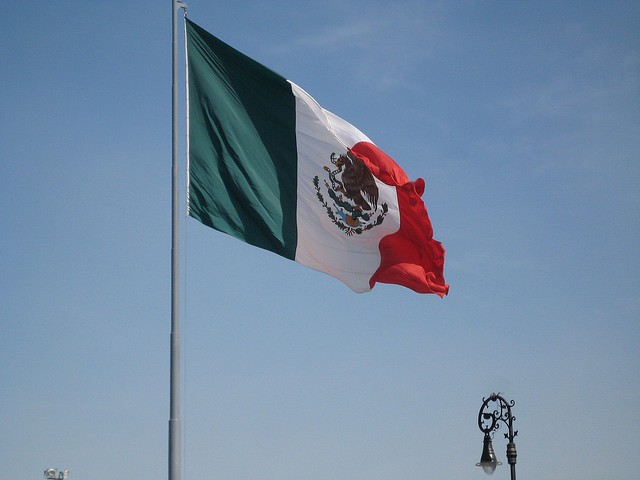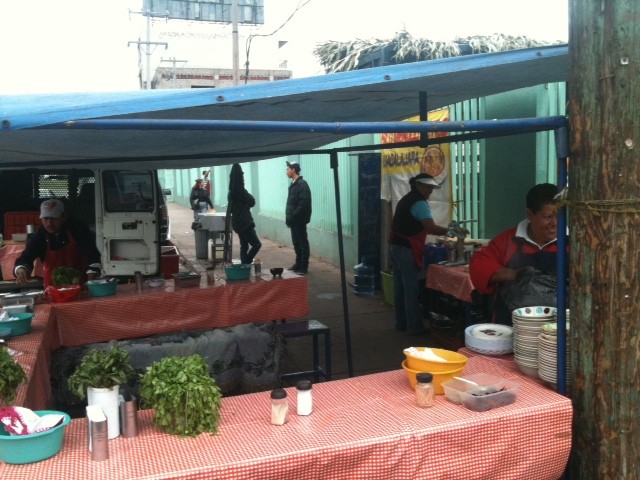
It gets fatiguing reading the same articles on travel to Mexico that parrot the U.S. State Department over and over again. Precious few of those people have ever actually been to the places they're writing about, but they turn the fear dial up to 11, the result being that Americans are more convinced than ever that all they have to do is put el dedito pequeñito south of the border and they'll end up dead.
It was refreshing, then, to read an article in the Washington Post last week by Andrea Sachs called “Mexico: A guide to which parts are safe to travel to, and which are dangerous” (though that title needs some work). Surely this would calm the hysteria, right?
]
The intent of the piece–to get people to stop treating Mexico as
one giant, bullet-sprayed turf war–was noble, and she's helping to
dispel some of the old, lingering myths; Chiapas, for example, has been a
safe and amazing destination for years, filled with some of the kindest
people and most jaw-dropping sites in Mexico.
She's also right about
some of the places she mentions. It's not a good time to go exploring Ciudad Juárez–not
necessarily because of the danger of crossfire, but because the city is
paralyzed and not functioning at its best. Going fishing in Falcon Lake along the border is one of the worst vacation ideas ever. The state of Chihuahua is a
beautiful desert, which would be the Texas of Mexico if Jalisco didn't
already hold that title; they make wonderful cheese and are masters of
grilled meats–but reports are that it's sewn up tight out of fear.

Then there's Sachs' treatment of Tijuana, which she files under “Go with caution, or with a burly friend.”
A burly friend? Are you kidding? What is a burly friend going to do, loom in the darkness and scare people away?
“As safeguards, avoid low-end bars and drink or eat only items that have
been prepared in front of you. Also, travel during the day and plan your
modes of transportation in advance.”
That's not how you avoid the illness known as las turistas.
Any seasoned traveler can tell you that you pick the places where
people are eating, preferably the locals. People line up for food for a
reason; the places that are busiest are usually the best, and the
patrons are usually proud of them and will tell you what to order, even
if you're communicating via exaggerated body gestures.
Writing off street food is a ridiculous idea in a city where half the
best food comes from carts and tents. Fish tacos from a cart in Ensenada or birria from a cart in Tijuana is one of the glories of the food down there. There's a reason there's a constant stream of people, even early in the morning, at Tacos Fitos next to the Mercado Hidalgo. I can't see the food being
prepared in front of me at the Carl's Jr. at 5th and Revolución, but
that's not the reason I avoid it.
Also, it's winter right now, in case Sachs hadn't noticed, which means
that if you don't venture out after dark, you're going to be mighty
hungry between 4:30 p.m. and 6:30 a.m. That means no cocktail receptions
at art galleries, no long, upscale Baja Med dinners with Baja's
excellent wine, no bar hopping along Calle Sexta, and no churros,
bacon-wrapped border dogs, or steaming bowls of post-club seafood soup with your fellow partygoers.
[

She
lumps the entire northern part of Baja California under “Don't visit
unless you're a commando”, her rationale being that there are military
checkpoints that may make Americans feel sketchy. It was this that makes me suspect that Sachs has never been
to Mexico; there are military checkpoints in every state and on nearly
all the highways. Mexico is not like the United States; the Mexican army
has power over domestic security, where the American army does not.
The
way Mexican military checkpoints go for most Americans is this: pull up
and stop, answer some questions, and get waved through. If you behave
oddly or become aggressive, or if a drug-sniffing dog detects the nickel bag of pot you decided you couldn't live without, then you're an idiot, and of course they're
going to hassle you and search you–just like the police here at home.
Thousands and thousands of Americans pass through the checkpoints every month,
most with nothing more than a cursory glance and a wave through.
So does this mean that you should walk down the street, counting your
500-peso bills with your wallet hanging out of your back pocket? Well,
let's ask this: would you do that in Los Angeles, Washington, New York
or Miami? Of course not. Traveling anywhere means being aware of your
surroundings, and traveling in a foreign country means you're not as
likely to understand when something is “off”–but that doesn't mean you
have to creep around in fear.
The single most important rule for traveling in Mexico–or anywhere in the world–is simple: no seas pendejo. Don't be an ass.
So,
Ms. Sachs, as is my wont, I would like to invite you to come to
Southern California. Bring your passport. We will go to Tijuana–I'm
reasonably burly, if that makes you feel more at ease–and we
will have amazing food both high end and low, great wine, fantastic
craft beer, and a damn good time. We'll go drink in a dive bar with
solicitous, friendly staff that would be the envy of any city in the
States, and we'll go find a place to dance–impromptu dance halls pop up
all over the city on the weekend. It's unlikely in the extreme that
anything will happen to you other than a paradigm shift.

